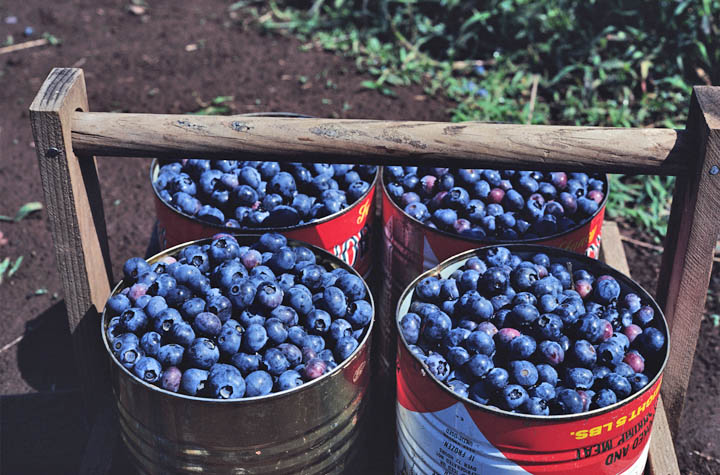
The Environmental Working Group (EWG) has released the latest version of its annual “Dirty Dozen” list, representing the 12 fruit and vegetable commodities alleged to contain the greatest relative levels of pesticides. Are such rankings validated by a careful examination of scientific evidence? Absolutely not.
March 1, 2012

Should you be worried about pesticide residues on specific fruits and vegetables? The Environmental Working Group (EWG), a U.S.-based environmental advocacy group, believes you should be, and has released the latest version of its annual “Dirty Dozen” list, representing the 12 fruit and vegetable commodities alleged to contain the greatest relative levels of pesticides. Are such rankings validated by a careful examination of scientific evidence? Absolutely not. Should you continue to try to eat more fruits and vegetables? Absolutely!
Since its release in June 2011, the list has drawn widespread media attention and consumers have been bombarded with headlines such as “An apple a day … means you’re eating plenty of the most contaminated fruit;” “Don’t like pesticides? Better avoid these fruits and veggies;” and “Beware of pesticides in fruits and vegetables.”
According to the EWG, consumers should purchase organic forms of the commodities on the “Dirty Dozen” list or consume fruits and vegetables on their “Clean Fifteen” list, which they have found to contain the lowest relative pesticide levels. However, the benefits of eating fruits and vegetables, regardless of how they were produced, far outweigh the risk. Eating the organic forms of the fruits and vegetables on either the Dirty Dozen or the Clean Fifteen lists is fine, if that is your preference, but read on to understand why eating the conventional forms is a safe choice too.
To put things in perspective, let’s take a step back in time. The 16th century Swiss physician Paracelsus developed the first principle of toxicology with his assertion that “the dose makes the poison.” To paraphrase Paracelsus, it is the amount of exposure to a chemical that determines the potential for harm, and not simply its presence or absence. The EWG rankings do not consider actual consumer exposure, but rather reflect a relative ranking of six “contamination indicators.” These indicators are heavily skewed to indict commodities where findings of the presence of residues of multiple pesticides were more common. Such findings, however, are not appropriate to justify the recommendation to avoid conventional or consume only the organic form of specific types of produce. Such a recommendation can come only after exploring the risk of actual exposure to the pesticide residue poses to human health. After all, organic farming uses pesticides, too.
While the EWG did not estimate consumer exposure to pesticides on its “Dirty Dozen” list for reasons that will be apparent below, this work has been done. Just prior to the release of EWG’s Dirty Dozen list, a paper authored by me and my doctoral student Josh Katz at the University of California, Davis was published in the Journal of Toxicology. This paper examined the same U.S. Department of Agriculture (USDA) pesticide residue data used by EWG to develop its rankings and developed consumer exposure estimates for each of the 10 most frequently detected pesticide residues on each of the twelve fruit and vegetable commodities. The paper also evaluated the methodology EWG used to determine its rankings.
Nothing to fear
Our findings are: 1) Exposures to the most commonly detected pesticides on the twelve commodities in the 2010 EWG report pose negligible risks to consumers; 2) Substitution of organic forms of the twelve commodities for conventional forms does not result in any appreciable reduction of consumer risk; and 3) The methodology used by the environmental advocacy group to rank commodities with respect to pesticide risks lacks scientific credibility. With advancements in analytical methods, one can now find low levels of almost anything, but these sensitive findings do not relate to public health effects.
How did the authors come to the above conclusions? Exposure to the most frequently detected pesticides on the twelve fruit and vegetable commodities comprising the 2010 “Dirty Dozen” was extremely low and represented only a tiny fraction of exposure levels considered to be of health significance. Three-quarters of the pesticide/commodity combinations showed consumer exposure estimates more than 1 million times lower than doses given to laboratory animals continuously over their entire lifetimes that do not show adverse effects.
In 2011, apples topped the “Dirty Dozen” list, moving up from the number four position in 2010. However, our analysis finds that exposure to the 10 most frequently detected pesticides on apples is well below levels of toxicological concern, with relative exposures between 20,000 and 28 million times lower than levels that do not harm laboratory animals. For three commodities on the “Dirty Dozen” list – blueberries, cherries, and kale – the highest relative exposure to a pesticide was at levels more than 30 million times lower than those that cause no effects in laboratory animals. Based upon such findings, it is difficult to justify warnings for consumers to avoid conventionally produced forms of such foods.
While the EWG’s methodology and interpretation of residue findings has been called into question, its recommendation that consumers eat their fruits and veggies, and their statement that “the health benefits of a diet rich in fruits and vegetables outweigh the risks of pesticide exposure” is undoubtedly worth repeating. Our work demonstrates that consumers have nothing to fear or to feel guilty about if they choose to purchase conventional forms of commodities on the “Dirty Dozen” list and further demonstrates that the existing regulatory approach for pesticides, including a safety review and establishment of appropriate pesticide application practices, adequately protects the public. So sit back and enjoy your apples, celery, strawberries, peaches, spinach, nectarines, grapes, bell peppers, potatoes, blueberries, lettuce, and kale! They’re good for your health, and eating those foods would make Paracelsus proud.
You May Also Like



